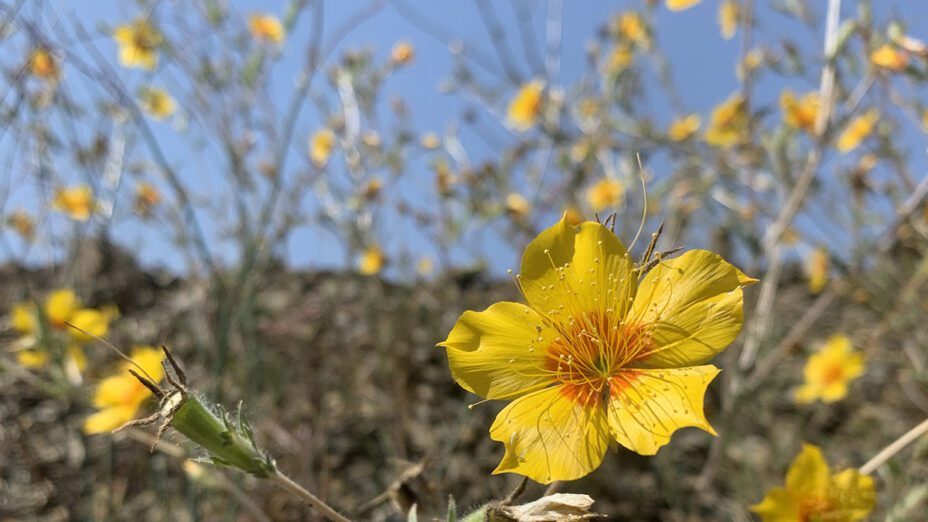
In 2020, the landscape of Del Puerto Canyon and much of the area around it was transformed.
That August, the fourth largest wildfire in recorded California history blazed through the Diablo Range, sweeping through Del Puerto Canyon and accelerating up and over ridge tops and valleys.
This year, in 2023, we completed our third and final year of the BioBlitz covering the burn zone of the SCU Lightning Complex.
Thanks to the help of everyone who participated, we were able to extensively document the amazing recovery of Del Puerto Canyon since it burned in 2020.
Exploring the Canyon
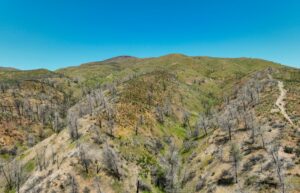
The impacts of the fires persist into 2023 as Del Puerto continues its recovery. Photo by Cooper Ogden
Upon arrival at Del Puerto Canyon, evidence of the fires is still clearly visible on the trees, many still blackened from scorching flames.
Waves of grass move with the wind along the slopes of Del Puerto—interspersed with an assortment of flowers and connecting with the oak woodland, chaparral, and creekside habitats contained within the canyon.
In the spring, the hills turn a brilliant emerald green. And in the summer, it is rocky and otherworldly; with its orange serpentine soil, the place almost feels like Mars.
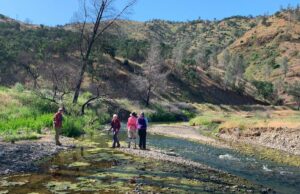
Discover Diablo hikers at Del Puerto Canyon. Photo by Mary Nagle
In recent years, we’ve hosted several Discover Diablo events at Del Puerto, trekking up the canyon’s hills and along the shore of Del Puerto Creek. As hikers scale the steep and rugged slopes of the valley, they have the chance to see the numerous unusual birds and rare plants that populate the area.
At our latest Del Puerto Discover Diablo event, hikers saw huge amounts of the rare fire follower flower, golden eardrops, among other flowers lining the trail.
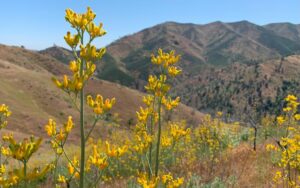
Golden eardrops (Ehrendorferia chrysantha). Photo by Mary Nagle
If the fires hadn’t burned through the area, this flower wouldn’t have had the necessary conditions to germinate and grow.
For those who reach higher elevations in the canyon, Mount Stakes is visible, a reminder of Del Puerto Canyon’s location within the Diablo Range just north of Henry W. Coe State Park.
Del Puerto Canyon is located just west of the town of Patterson (which is 27 miles southeast of Tracy). It is in eastern Stanislaus County, and it is part of the Diablo Range. If you want to visit Del Puerto Canyon yourself, check out Frank Raines Regional Park.
An Ecosystem Under Threat
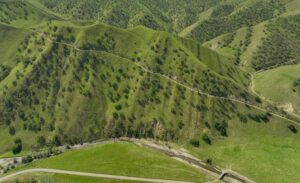
Del Puerto Creek from above. Photo by Cooper Ogden
In recent years, Del Puerto Canyon has been threatened by a proposed reservoir that would submerge a large portion of Del Puerto Canyon.
Fortunately, approvals for this project were overturned thanks to a lawsuit filed by several environmental groups, including Save Mount Diablo.
The proposed reservoir would have destroyed more than 1,000 acres of grassland habitat and hundreds of acres of oak woodland, streamside, and other wetland habitat.
Three Years of Discovery
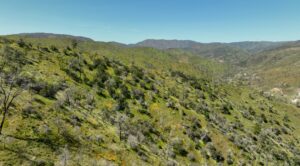
Del Puerto Canyon. Photo by Cooper Ogden
This year, in 2023, we completed our third and final BioBlitz covering the burn zone of the SCU Lightning Complex. Thanks to the help of everyone who participated, we were able to extensively document the amazing recovery of Del Puerto Canyon since it burned in 2020.
In 2021, we started a series of two-week BioBlitzes within the fire footprint of the SCU Lightning Complex, which included Del Puerto.

Del Puerto Canyon and Del Puerto Creek. Photo by Scott Hein
During 2021, 2022, and 2023 numerous researchers, both professional and citizen scientists, came out to Del Puerto to catalog the species and recovery of the area. They recorded the existence of hundreds of species within Del Puerto Canyon.
Del Puerto Canyon harbors very high plant diversity. It’s a botanist’s paradise and more.
Del Puerto Canyon has an extensive bird population, making it an immensely popular birding destination; on eBird, more than 170 species of birds have been recorded in the canyon.
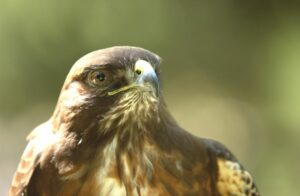
Red-tailed hawks can be frequently spotted in Del Puerto Canyon. Photo by Scott Hein
It also has a particularly thriving raptor population. Visitors can spot golden eagle nests and raptors like American kestrels and red-tailed hawks swooping through the sky.
Rare species including the San Joaquin kit fox, American badger, California red-legged frog, foothill yellow-legged frog, and California tiger salamander have all been observed in this area.
As Del Puerto Canyon continues to recover in the coming years, we may see even more rare plants and animals inhabiting the canyon.

Otherworldly Del Puerto. Photo by Sean Burke

